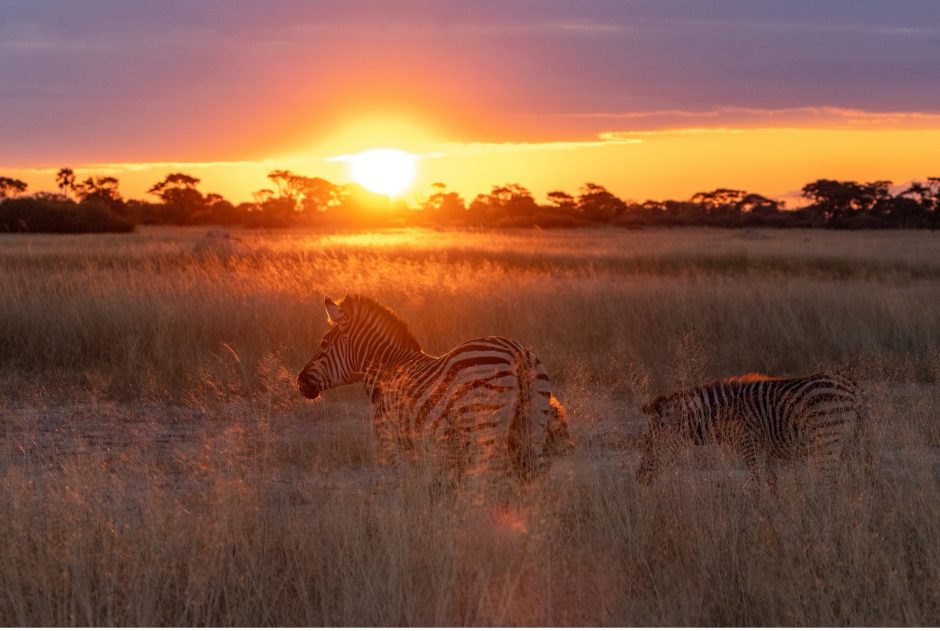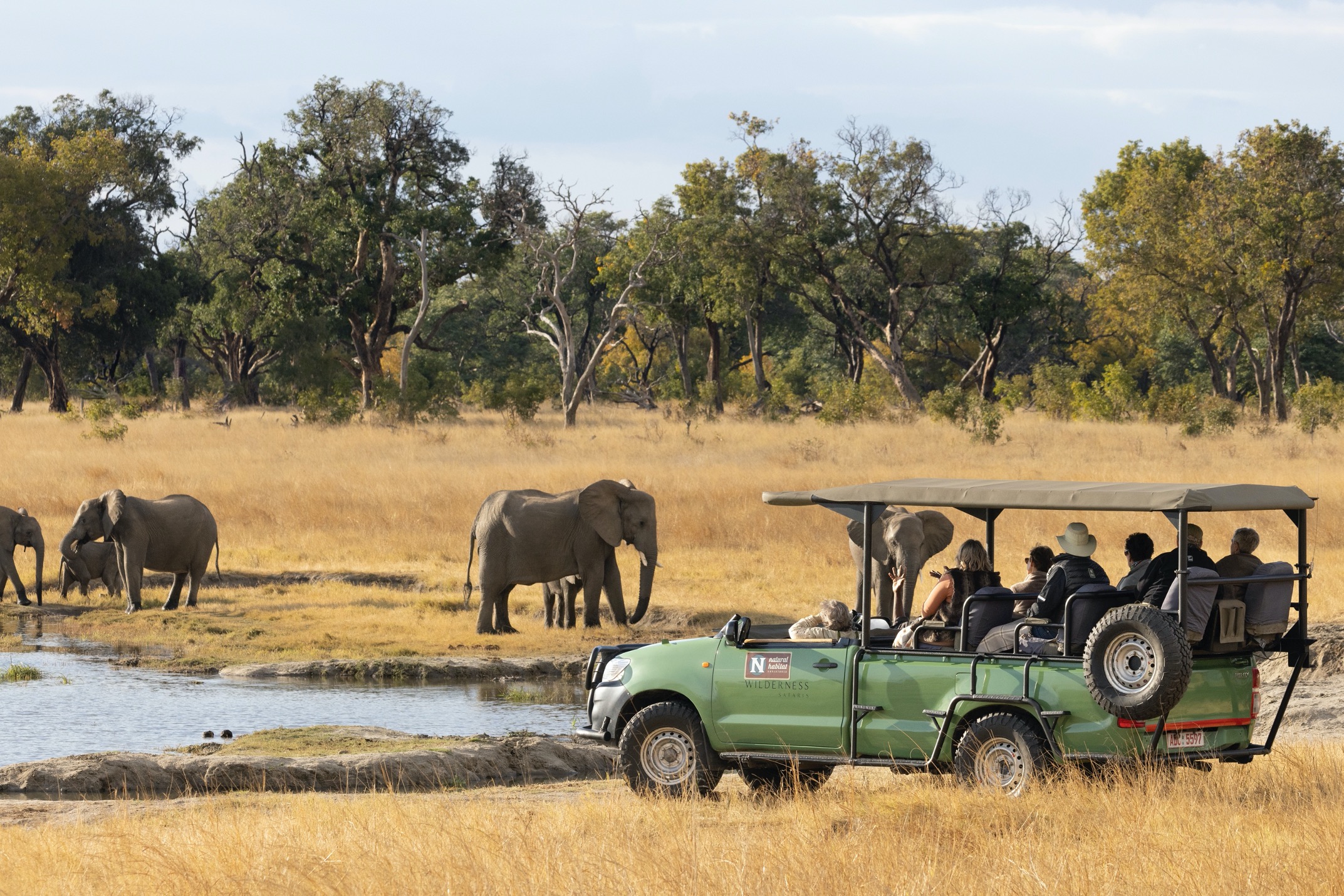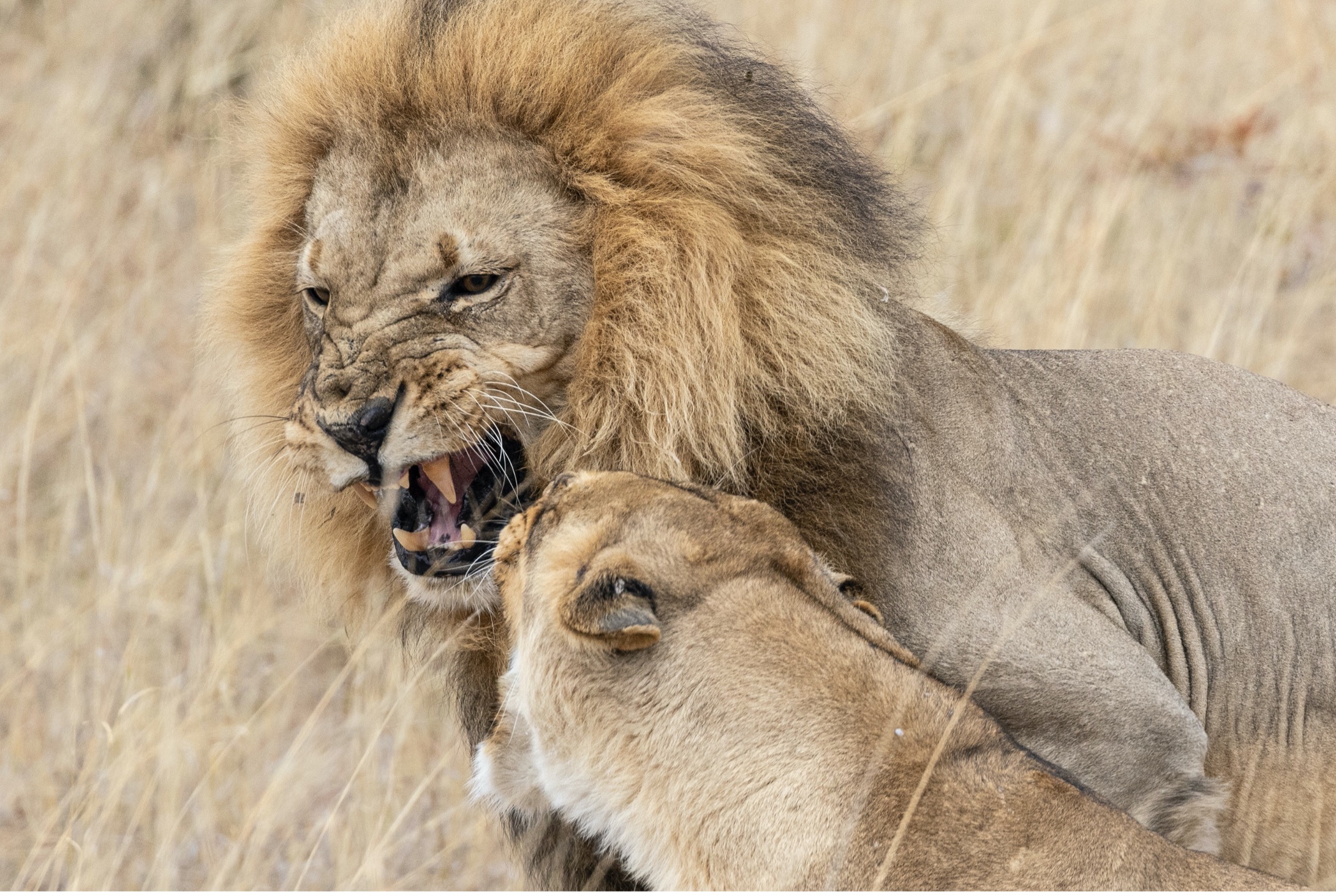
Pro Tips for Amazing Photography during an African Safari
Africa is the big show when it comes to nature photography. You likely won’t get a better chance to photograph large, charismatic wildlife at closer range in a diversity of ways with a tremendous variety of species.
Thus, you are going to want to bring your A-Game when going on an African Photo Safari!
Keep reading for a deep dive into how professionals plan for and nail the best photographs while on safari in Africa.

Pick the right zoom/telephoto lens
The “best” zoom telephoto can be somewhat subjective. But where pro photographers differ isn’t necessarily the range, but more of whether to use a prime lens or a zoom lens—a prime lens being one that is fixed and cannot zoom, whereas a zoom lens allows you to zoom in and out to compose the shot to your liking.
Let’s start off with the range of telephoto you’re going to want. Typically, you’re going to want something at the maximum end of the range in and around 400mm to 600mm at what we term a “full frame equivalent.” If you have a crop sensor camera, you’ll need to factor in your multiplier to convert the lens to a full frame equivalent focal length.
For instance, if you are shooting on an Olympus mirrorless system, their crop factor is 2x. Thus, a 300mm lens is actually a 600mm full frame equivalent. That is, if I’m using my full frame camera and you’re using your Olympus, a 600mm on mine is going to be the exact same as a 300mm on yours.
Now, the main reason I have 600mm as the upper range is simply because your options become extremely limited beyond 600mm. In today’s day and age, there are a handful of options that fit perfectly into that 400-600mm top range, including the venerable 80-400mm and 100-400mm class of lenses, as well as some of the newer super telephotos like the 200-500mm, 100-500mm, and 150-600mm.
If you go below 400mm, you really just don’t have quite enough reach to get all the shots you want, even when critters are close.
And this is the main reason I personally like to stick with a zoom telephoto vs. a big telephoto prime. Telephoto prime lenses are oftentimes better quality and have a “faster” aperture rating like f/4 or f/2.8, but they usually are much larger and heavier and come with a significantly higher price tag. To me, these things aren’t worth it when you also consider that you really need to be covered in the 100-400mm range for many wildlife photography you’ll have in places like Botswana and Kenya.

One camera body or two?
The previous section leads me perfectly into this quintessential question…should you bring two camera bodies with you?
To me, the answer here is largely dependent on whether you do indeed have a prime lens you plan on bringing, such that you desperately need to cover the wider end of the spectrum without changing lenses.
For instance, if you are bringing a 500mm prime lens, it will be quite a bit of time to change that lens out to a 24-105mm if you see something too close for a 500mm photo. Thus, having a second camera body with your trusty wide angle is key.
But what about folks that don’t bring a large prime lens…do you still need a second camera body if you are shooting with a 100-400mm or 200-500mm?
There is of course much less of a need, but it’s still nice to have. For one, having a second body gives you a backup if your primary camera fails. This shouldn’t happen, but it sometimes does. More importantly, having a 24-105mm lens in addition to a 100-400mm lens gives you fantastic coverage such that you can swap between a wildlife portrait one second and a big landscape shot with elephants emerging from the tree line the next second.
But keep in mind a second camera body is a nice to have, and is not a need to have. Plus, remember that we all have amazing little cameras with us all the time now via our smartphones, and they take very good landscape and travel photos (plus great video and slo-mo at your fingertips). Thus, we all somewhat have a second camera with us most of the time.
Your go-to camera settings each day
I always advocate to be very deliberate with what camera settings you “walk out the door” with, as amazing photo opportunities can, and do, present themselves without warning and quite frequently when in nature.
Depending on your day, location, and photo preference, ask yourself what you are most likely to encounter photo-wise right off the bat. You have the time as you’re getting ready for the day to quickly dial in some logical settings. But if an opportunity presents itself to you, you oftentimes don’t have the time in the field to make changes from whatever your camera was set on from the day before.

Usually, the immediate photo ops are something landscape related, often having to do with some amazing morning light. While you can take stunning landscapes with either a wide angle or zoom telephoto, your camera settings are relatively predictable—wide depth of field like f/5.6 and above (ideally f/8) and your shutter speed just needs to be fast enough to freeze your own hand motion—like 1/200th of a second (slower or faster depending on vehicle movement, as well as your lens choice).
Because early morning hours on safari are usually at or before daybreak, I start off with quite a high ISO just to make sure I don’t run into any problems. ISO 2000 or 3200 usually does the trick (on my full frame camera), but be careful with these high ISO, as some cameras top out at 1600 before the photos get really negatively impacted. You may want to do some photo tests at home with your camera in dim conditions and high ISOs before the safari to be sure.
If you think you may encounter some stunning wildlife right off the bat (if your photo guide alerts you, perhaps from intel he or she has received earlier in the morning), quickly be ready to switch to wildlife photography settings, which would be very similar, but a faster shutter speed and shallower depth of field, like f/5.6 and below.
Know when to pull back and photograph wider

It’s extremely tempting to “fill the frame” with wildlife for each and every photo. This is partly due to our own excitement of seeing the detail in the animal, as well as the fact that our back-of-camera screens are quite small, so small wildlife photos just aren’t as thrilling. However, make a mental note that you must move on from that “big” photo into photos that feature the animal in the landscape as part of each (or most) photo opportunities.
I’ve found over the years that these “big” photos of faces of lions and elephants stretching from side to side of my frame are great, but they often are not my most cherished photos. In some cases, they could have been taken anywhere…Kenya, Namibia, Botswana, or maybe even a zoo. The photos that really stand out, in my humble opinion, mix the landscape and vibe of the habitat with the stunning wildlife.
There is no perfect way to accomplish this each and every time—that’s where the art comes in. However, forcing yourself to pull back after your first couple of “filling the frame” photos will give you more photos, better photos, and more happiness when you return home and begin editing.

Don’t miss a single moment
Today’s latest cameras have extraordinarily fast frame rates, in that they can take more photos per second than ever before. Even some of the “base models” are shooting 10 photos a second. Pro models are topping 30 frames per second (referred to as FPS). This is astounding.
While this does eat up memory, and requires a bit more time sorting through photos later, it does give you a distinct advantage and benefit, especially while on a wildlife safari.
Oftentimes when photographing wildlife, they are exhibiting some sort of behavior…even while sitting peacefully, they are looking around, maybe yawning, standing up or sitting down. Sometimes wildlife behavior is wildly explosive and dramatic. Either way, having your camera on “burst mode” or the fastest frames per second mode is highly advisable when on safari.

What it gives you is the ability to capture each and every moment—milli-moments, if you will—of action. The difference between fractions of a second with wildlife behavior can mean the difference in a great shot and an exceptional one. I can promise you that in the series of photos (maybe 20 photos of a similar scene) there will be onethat you find out of that batch that is leaps and bounds your favorite. Again, you do have to spend a little extra time sorting on the computer, but you may be surprised what a difference this makes for your end result of photos from your photo expedition.

Photo safaris in Africa are simply the best—it’s hard to find a place or a suite of subjects more compelling, more exciting, and more photogenic. If you’re headed out on an African photo trip sometime I hope these tips have been helpful and I hope you return home with thousands (yes, thousands!) of photos you love and cherish.
Cheers, and be well,

Court
4 Comments

Mats Carnmarker
January 17, 2023 at 6:57 am

Court Whelan, Ph.D.
January 22, 2023 at 2:08 pm

Anne Snowden
June 9, 2023 at 8:32 am

Court Whelan, Ph.D.
June 9, 2023 at 10:37 am
This is a good guide, especially for newbies.
I’m a wildlife photographer myself and would like to add to this article a couple of pointers.
The debate about crop factor sensors vs full frame sensors has been dealt with for several decades now. I myself started out with a crop factor camera and still have it.
Unfortunately it’s become somewhat stated by almost everyone as a given that crop factor is good for wildlife, and the likes, for reach. That you will get closer to the subject with same lens as on a full frame. It very well appears so when you look into your camera, but the reality is that in most cases, most cameras, you will always get a better photo with a full frame camera (with the same lens) because of several factors. Most of the times the full frame camera will have more megapixels and that gives you the choice of either cropping the photo to the exact same closeup as the crop factor camera, AND you have a second option of photo with wider field area that you were not able to get with the crop factor camera.
But the most important issue is that a full frame sensor is much larger and therefore produces much higher quality photos because of the photosites being much larger on the full frame sensor, giving better quality in the highs and lows of light and less noise.
Another great benefit is getting a much nicer bokeh (DoF).
The quality of my work has increase many times over when moving from crop factor to full frame. I do a lot of bird photography but also other wildlife.
For a beginner a crop factor may of course be better, may give more and better results because it’s harder to get the perfect photos with a full frame as you have to learn to handle camera and lens more exact. It will be easier to get wildlife in focus with a crop factor camera.
I also want to add to the second camera body on a wildlife trip. One great benefit is, as explained in the article, to be able to quickly switch from shooting something at a far distance to closeup. Like when in a hideout and you are shooting a bear far away and suddenly another animal passes by much closer, too close for your large 500mm to capture the whole animal in the frame. But one major advantage is if your camera stops working, then you have an extra camera to work with. It would be a minor disaster if you are suddenly without a camera on you expensive and long time planned trip.
great tips here, Mats! I agree fully. I went full-frame about 10 years ago and never looked back :). While you sacrifice a bit of “zoom” the quality is just simply unmatched. Thanks for contributing here!!
My favorite safaries are the photographic ones with an active teacher. On the last one I was amazed at how much lighter the mirrorless equipment was from someone in the group. The drawback for me was the price. Do you feel mirrorless will be the lens to have?
Thank you for your concise article.
hi Anne, yes absolutely. Mirrorless is definitely the future with cameras. They aren’t all light and small, and many of them are becoming very similar to DSLRs in those departments. However, the quality and capabilities are staggering and far better than DSLRs due to their inner workings. Long and short of it is that they’re the way to go :).